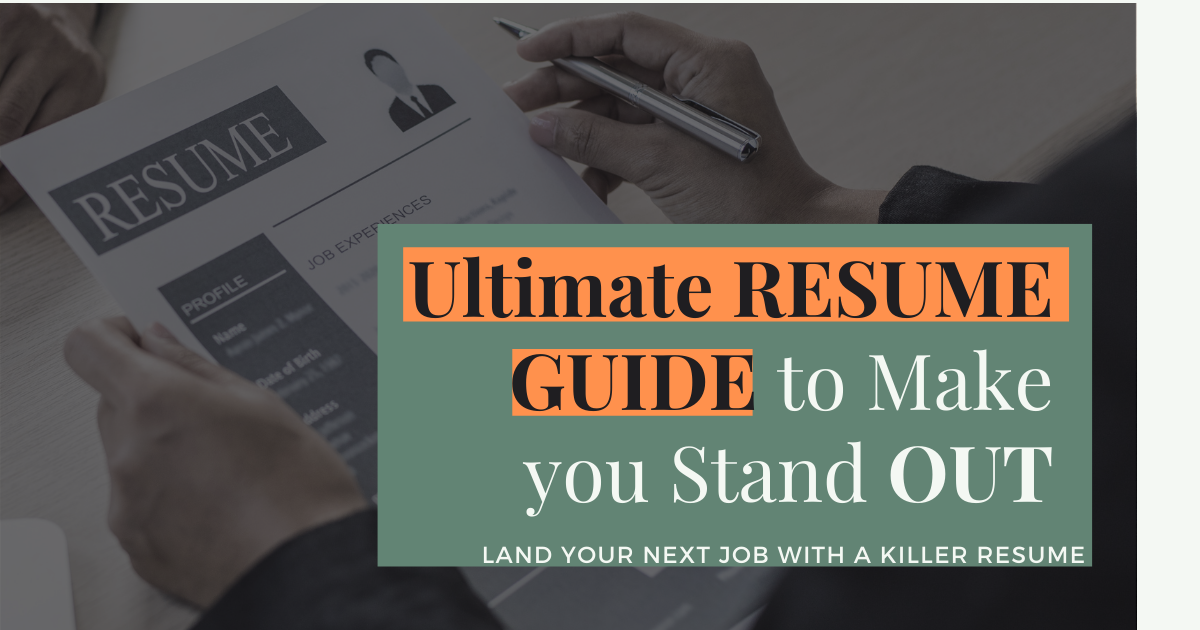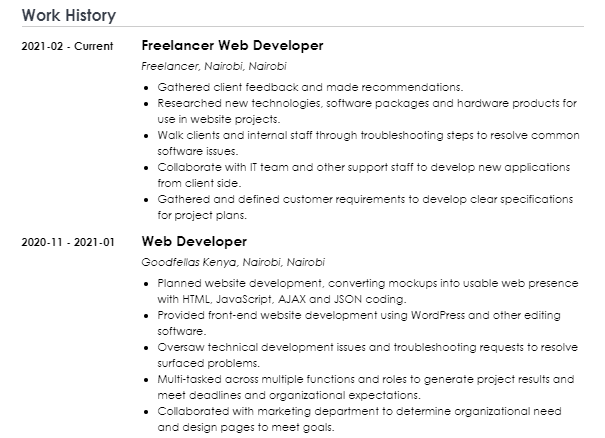Writing a résumé can be a little intimidating. And the pressure to make it really good and fill in each detail can be tiresome and scary. This is especially true if you're doing it for the first time, because you might not know what to add in or what to leave out.
Before we get into more detail, let me share my experience. I have applied for lots of job that all required a professional résumé. But in the beginning, I had no idea how to write one.
So I would head over to the browser and search for online résumé builders. A list of a bunch of websites offering the services would show, but since am only human I would always choose the ones labeled FREE. I mean, who does not like free services – 'cause I do.
Just as Luther Vandross said: "The best things in life are free."
Then I'd craft my résumé on the site and it was always a good experience with amazing templates – until I reached the downloading point. Then they always asked for cash despite advertising that it would be free.
But don't worry – writing a good professional résumé does not have to be this difficult. Actually it should be easy and fun, because you are putting down your achievements down on paper.
The best way to make résumé writing smooth is to get some guidance on what you should include and what you should leave out. So that's what we will talk about in this article.
We are going to go through the steps of writing a professional résumé so that by the time we are done, you will want to show off your newly crafted résumé to the world. You'll also be ready to apply for that dream job you have always wanted.
Let's get started
What is a résumé?

A résumé is a document that provides a summary of your education, work history, credentials, accomplishments, and skills.
Your résumé will likely be the first document potential employers request and review when considering hiring you, followed by a cover letter.
Before we get any further, just a quick reminder that a résumé is different from a curriculum vitae (CV).
Types of Resumes
Most professionals résumé writers argue that there are three different types of résumés: Functional, Chronological and Combination
-
Functional résumé - This type of résumé focuses on what you've done, and the experience you have gained from multiple projects.
-
Chronological résumé - This is the most commonly used type of résumé, which focuses more on your work history. In this résumé, you list jobs in reverse chronological order, beginning with your most recent job back to the oldest.
-
Combination résumé - Just as the name suggests, this is a combination of both the functional and chronological résumé types.
How to write your résumé
Your résumé should not be the same as anyone else's, because we all have different skills and experiences. But your résumé should still have the following sections and information in common regardless of what template you choose to use:
Header Section
This section is where you should include:
- Your name
- Phone number
- Email address
- Social links (social media and personal website/portfolio/GitHub)
- A headline that tells who you are as a candidate
All this information makes it easy for recruiters to know who the résumé belongs to and how they can reach you.
Profession Summary Section
This is a brief paragraph at the beginning of the résumé that describes who you are, what you do, and why you are perfect for the job.
This section is not all about what you want, but what your potential employer can expect from you. It can make or break your chances with your recruiters.
Here's a sample so you can get an idea of what a summary might look like:
Work Experience Section
This is the most important part of your résumé where you get to detail your work history.
This section should include the companies where you've worked, your employment periods, roles and titles you've held, and also the accomplishments you achieved. You'll definitely want to make this section stand out.
First you will need to list your experience from the most recent (top) to the oldest (at the bottom). If you are currently working at a certain company include the "[start month and year - current]"
Under this section, I highly recommend using bullets to list your role/duties from your past and current companies. I think 3-5 bullet points is ideal here.
Use action verbs to describe your tasks and accomplishments, and also remember to write in the past tense.
When listing your duties, include a measurable accomplishment with each role. This will give the recruiter confidence in your abilities.
Skills Section
This section has become more and more important to recruiters as they look for candidates with a specialized background.
When listing down skills you have, make sure to include both hard skills and soft skills.
By hard skills, I mean skills related to your field of study, the ones you have gained through work and study. Soft skills are more personal and related to your character, like being team-player, having integrity, excelling at teamwork, having the ability to focus, and so on.
You will want to balance both types of skills and not to rely on one type alone. Also remember to use keywords here, as companies use Application Tracking Systems (ATS) to scan through your résumé for ideal candidates.
Taleo is a common ATS that recruiters use, and for the top résumé keywords check out this resource
Education Section
Many jobs require a certain level of education. So if you have a degree or have completed a bootcamp or other certificate, it is important to include it on your résumé.
If you have just graduated, then your education section should go above your work experience. You should also include relevant course work and other voluntary work or projects you've done that support your application.
But you might be wondering – what if you don't have formal higher education?
What should you include in this case?
Instead of listing a degree, you can highlight the different ways that you have learned and grown in that field. For example, high school education, bootcamps you've participated in, projects you've completed/worked on, and even internships. List them here if you lack a formal degree.
Awards, Certifications, and Accolades Section
You can include this section in your work experience section as achievements if you want. But I think highlighting it in its own section is better.
This section will increase your credibility, assuming you have things to list in it. Some certifications you can include are things like:
- Marketing certifications
- Education, coding bootcamp, and freeCodeCamp certifications
- Online course certificates
- Awards or grants you've received
Résumé Formating Tips

Now that you are done with the first step of building your résumé, you should make sure it's formatted properly.
Double check to make sure you haven't missed anything. A well-polished résumé will make it easy for recruiters to go through it and get the information they need.
How to write your résumé
✔ Be honest
✔ Use easy to read fonts
✔ Use simple words and action verbs
✔ Include unpaid internships to showcase your skills
✔ Limit your résumé to two pages max (one page if you're early in your career
✔ Write the résumé to suit the position you are applying for
✔ Proofread you résumé
✔ finish crafting and then start editing it
How not to write your résumé
✔ Don't include reasons for leaving your previous job
✔ Don't include references - instead say that references will be provided if requested
✔ Avoid using too many bullet points
✔ Don't save your résumé as a PDF unless asked to
✔ Don't use an inappropriate email address
✔ Avoid including unnecessary information like your age, weight, and so on.
✔ Avoid including your picture in your résumé - just let the recruiter focus on your skills.
Now that we've covered what you need to do to write a professional résumé, you'll probably want to actually make one.
If you're still finding it difficult to format your résumé yourself, don't worry – you're not alone.
There are easy ways to make your résumé look good. You can check out the sites below, but keep in mind that you will have to pay:
Résumé Builder Sites
The sites listed below offer different formats of writing résumés with templates to use. If you check them out they offer guidance on how to write résumés easily.
I would not suggest copying everything you see there, but you can follow their template guidelines and try to create your own résumé to match those templates.
Feel free to check out and try different templates and designs as you decide which one to work with for your résumé:
Conclusion
If you really want to improve your chances of getting a certain job, make sure you write your résumé so that it's tailored to each individual job application.
If you have a well-written résumé that matches the job requirements and includes relevant keywords from the job description, it'll help you stand out to recruiters.
This article was quite long, so if you have read this far, thank you!
Connect With me at Twitter | Insta | YouTube | LinkedIn | GitHub
Do share your valuable opinion, I appreciate your honest feedback!
Enjoy Coding ❤







